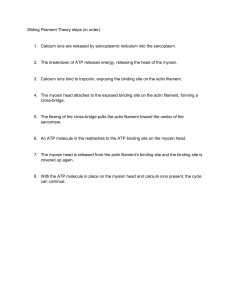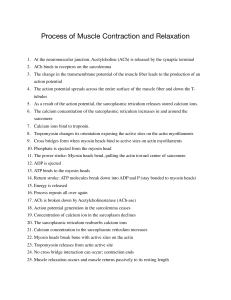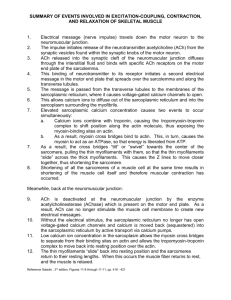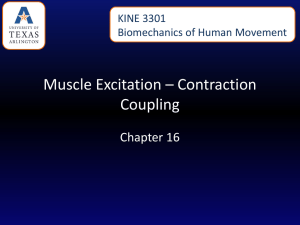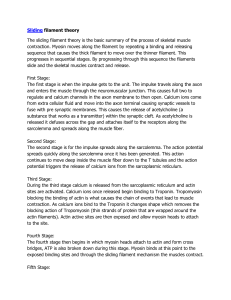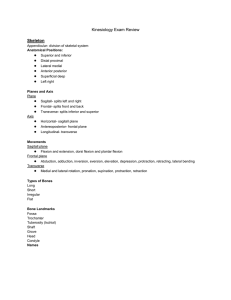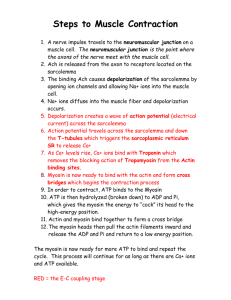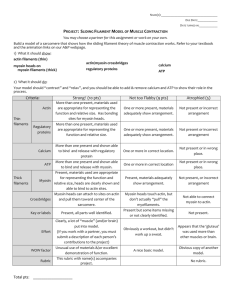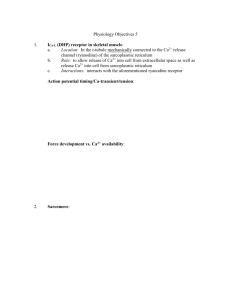Sequence of Events in Muscular Contraction
advertisement
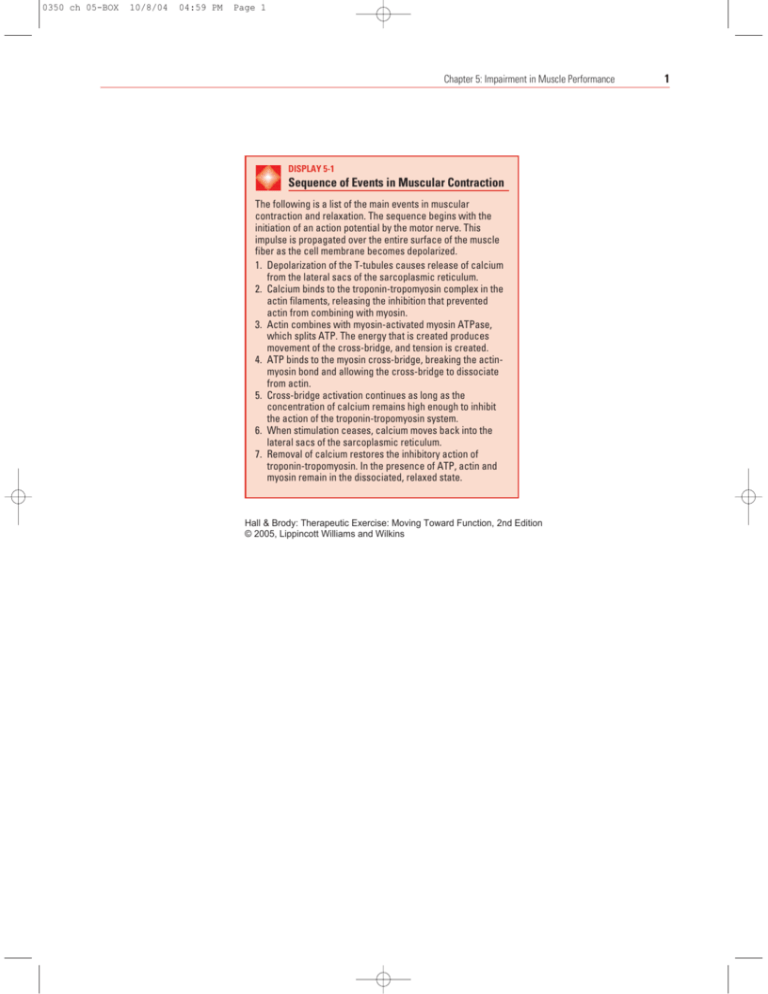
0350 ch 05-BOX 10/8/04 04:59 PM Page 1 Chapter 5: Impairment in Muscle Performance DISPLAY 5-1 Sequence of Events in Muscular Contraction The following is a list of the main events in muscular contraction and relaxation. The sequence begins with the initiation of an action potential by the motor nerve. This impulse is propagated over the entire surface of the muscle fiber as the cell membrane becomes depolarized. 1. Depolarization of the T-tubules causes release of calcium from the lateral sacs of the sarcoplasmic reticulum. 2. Calcium binds to the troponin-tropomyosin complex in the actin filaments, releasing the inhibition that prevented actin from combining with myosin. 3. Actin combines with myosin-activated myosin ATPase, which splits ATP. The energy that is created produces movement of the cross-bridge, and tension is created. 4. ATP binds to the myosin cross-bridge, breaking the actinmyosin bond and allowing the cross-bridge to dissociate from actin. 5. Cross-bridge activation continues as long as the concentration of calcium remains high enough to inhibit the action of the troponin-tropomyosin system. 6. When stimulation ceases, calcium moves back into the lateral sacs of the sarcoplasmic reticulum. 7. Removal of calcium restores the inhibitory action of troponin-tropomyosin. In the presence of ATP, actin and myosin remain in the dissociated, relaxed state. Hall & Brody: Therapeutic Exercise: Moving Toward Function, 2nd Edition © 2005, Lippincott Williams and Wilkins 1

